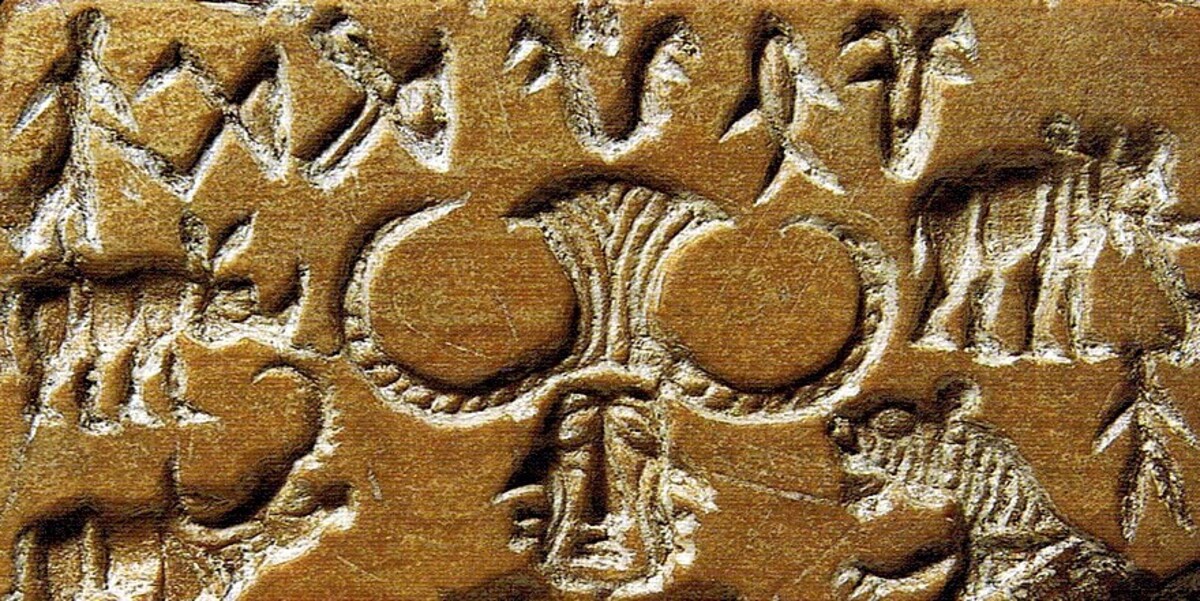The Pashupati Seal is a steatite seal that was discovered at the Mohenjo-daro archaeological site of the Indus Valley Civilization. The seal depicts a seated figure that is possibly tricephalic (having three heads). It was once thought to be ithyphallic, an interpretation that is now mostly discarded. The man has a horned headdress and is surrounded by animals. He may represent a horned deity
It has one of the more complicated designs in the thousands of seals found from the Indus Valley Civilization, and is unusual in having a human figure as the main and largest element; in most seals this is an animal. It has been claimed to be one of the earliest depictions of the Hindu god Shiva, or a “proto-Shiva” deity. The name given to the seal, “pashupati”, meaning “lord of animals”, is one of Shiva’s epithets.
It has also been associated with the Vedic god Rudra, generally regarded as an early form of Shiva. Rudra is associated with asceticism, yoga, and linga; regarded as a lord of animals; and Shiva may be depicted with three heads.
The seal was uncovered in 1928-29, in Block 1, Southern Portion of the DK-G Area of Mohenjo-daro, at a depth of 3.9 meters below the surface. The seal is kept in the National Museum of India in New Delhi.
Source: wikipedia, Featured Image Source




Comment here